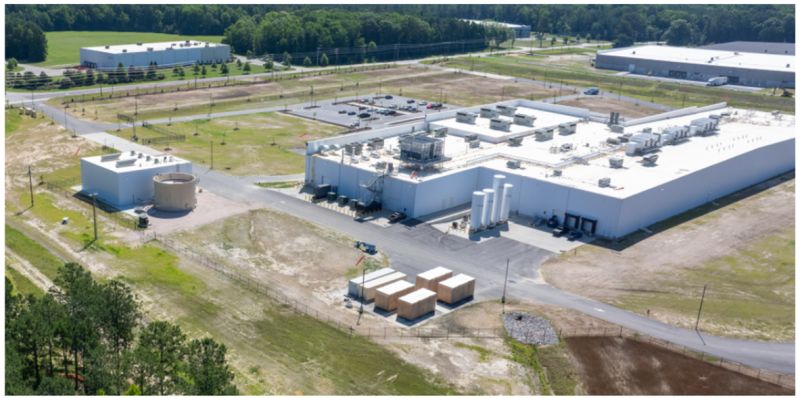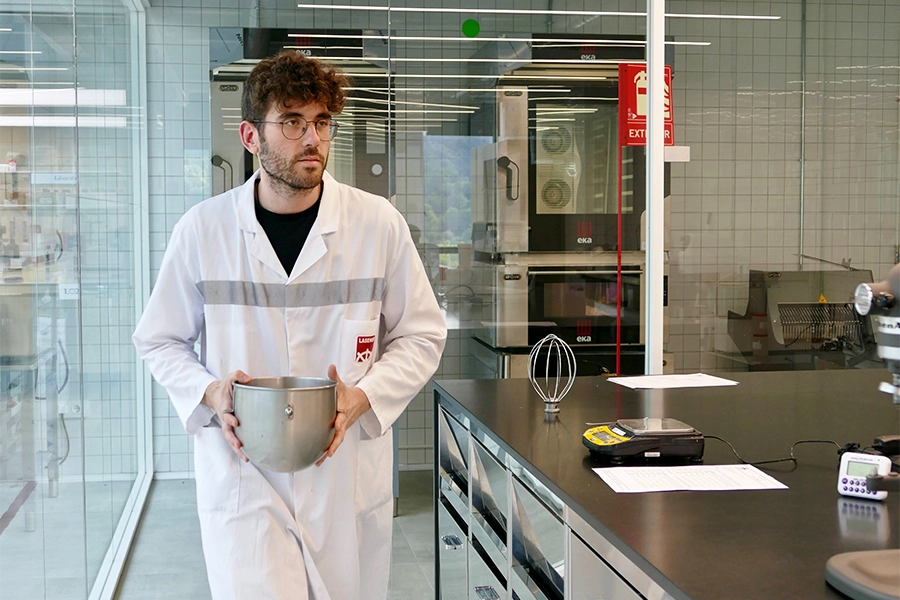

FPP Amsterdam 2025 Speaker Interview: Smart spectra – how Evonik’s near-infrared analytics are refining the future of plant protein
Dr Johannes Busch explains how Evonik’s near-infrared analytics are helping plant-based food producers move from guesswork to precision – enabling real-time control of nutritional quality, texture, and ingredient performance at scale
When it comes to scaling the next generation of plant-based foods, precision matters. For Dr Johannes Busch, Service Business Development at Evonik, it’s the difference between guesswork and scientific control. Busch, who will speak at The Future of Protein Production Amsterdam 2025, believes that smarter analytics – specifically near-infrared spectroscopy – can give manufacturers the real-time insight they need to deliver nutritional, functional, and sensory quality at scale.
“Protein nutrition is, in fact, amino acid nutrition,” he says. “Understanding the amino acid composition and digestibility of plant proteins is crucial for healthy human diets and for the performance of food products.”

Busch notes that legumes and cereals have been central to human nutrition for millennia. Lentils and rice in India, or faba beans and maize in Mexico, have long been combined to achieve complementary amino acid balances – even before their nutritional logic was understood.
Today, that ancestral wisdom is being refined by data. “Traditional food systems achieved balanced nutrition by experience,” Busch explains. “Now, near-infrared tools allow us to quantify amino acid profiles instantly, so we can design blends and processes that optimize both nutrition and texture.”
The balance of indispensable amino acids – particularly lysine, methionine, threonine, and tryptophan – underpins protein quality. These molecules not only determine nutritional value but also influence structural and textural properties. Cysteine, for example, contributes to firmness by forming disulfide bonds, while glutamine affects moisture retention in doughs and meat analogs.

Beyond nutrition: the physics of proteins
As plant-protein processing technologies evolve, two priorities have emerged for manufacturers: ensuring high nutritional quality and maintaining desirable processing characteristics. Both depend on knowing exactly what’s in each ingredient batch – and that, Busch emphasizes, is where advanced analytics become essential.
“National and international food composition databases are valuable references,” he says, “but their data can be inconsistent or outdated. That’s a risk when you’re scaling production or sourcing globally.”
To close that gap, Evonik is applying analytical rigor honed over decades in animal nutrition. For more than 70 years, the company has built expertise in quantifying proteins, amino acids, and other nutrients for feed applications. Now it’s bringing that precision to human food systems.
“Our aim is to support the plant-based protein sector with reliable, real-time data,” Busch explains. “By integrating our AMINOLab, AMINONIR, and AMINODat tools, we can help producers assess ingredient quality instantly and benchmark against global datasets.”
Our aim is to support the plant-based protein sector with reliable, real-time data

Inside the AMINONIR platform
Evonik’s AMINONIR service was originally developed to evaluate agricultural crops such as soy, pulses, grains, and corn for feed optimization. It measures nutritionally significant ingredients including proteins, amino acids, minerals, starches, fibers, and fats using internationally standardized reference methods at the company’s AMINOLab facilities.
Once a large enough data pool exists for a given raw material, the company applies Fourier-transform near-infrared (FT-NIR) spectroscopy to generate a “translation” of each spectrum. Chemometric validation ensures that these calibrations can then be used for precise, non-destructive analysis of new samples.
The result is a rapid, repeatable workflow: “With AMINONIR Advanced, the entire process – from measuring a sample to receiving results – takes only a few minutes,” Busch says. “That speed enables batch-by-batch process optimization and quality control by source.”
Evonik continuously validates its analytics through international proficiency networks such as AAFCO, BIPEA, and VDLUFA, and updates calibrations in line with ISO 12099 standards. It’s a system built for scientific consistency and commercial practicality alike.
Global insight in every spectrum
Each new analysis contributes to Evonik’s AMINODat database, which grows by more than a million data points every year. This vast repository enables customers to compare their own ingredient profiles with anonymized global benchmarks.
“Having access to global analytical data provides valuable insight into competitiveness,” Busch says. “It helps producers understand how their raw materials and processes perform against international standards.”
For plant-based food manufacturers, the same tools can deliver unprecedented visibility into the variability of crops and suppliers. That means fewer surprises in formulation and more reliable product performance across geographies.
Having access to global analytical data provides valuable insight into competitiveness

Accelerating innovation along the value chain
Busch is clear that near-infrared spectroscopy is not just a lab technology but a strategic enabler for a more resilient and transparent food system. By allowing instant evaluation of key parameters – from amino acid content to digestible starch fractions and fatty acid profiles – it supports smarter sourcing, blending, and processing decisions.
“Users across the plant-based value chain, from grain collectors to food producers, can benefit from precisely measurable parameters,” he says. “That’s essential for consistent, high-quality products and for consumer trust.”
Evonik’s analytical team is now inviting collaboration with partners in the plant-based food sector to extend these capabilities. The company’s experience in standardized methods, calibration development, and global data integration, Busch adds, can strengthen the entire ecosystem’s ability to use agricultural protein resources more efficiently and sustainably.
Precision meets purpose
For Evonik, this expansion into plant-based applications is a natural progression. The company’s Animal Nutrition business line has long focused on optimizing amino acid utilization to reduce waste and improve resource efficiency. Transferring those principles to human nutrition fits squarely within the company’s broader sustainability agenda.
“Our technologies have always been about making better use of nature’s proteins,” Busch says. “By supporting plant-based food producers with analytical precision, we’re helping to create a more sustainable and nutritious future.”
As a key sponsor of The Future of Protein Production Amsterdam 2025, Evonik will use the event to showcase how its AMINO analytical suite is bridging the gap between agricultural science and next-generation food production. Busch’s session will explore how advanced NIR analytics can de-risk ingredient sourcing, accelerate innovation, and strengthen consumer confidence in plant-based protein products.
“The transition to alternative proteins will depend on data-driven collaboration,” he says. “That’s where Evonik can make a real difference.”
Johannes Busch is one of more than 100 speakers taking to the stage at The Future of Protein Production Amsterdam on 29/30 October 2025. To join him and more than 1,000 other attendees, book your conference ticket today and use the code, 'PPTI10', for an extra 10% discount on the current rate. Click here
If you have any questions or would like to get in touch with us, please email info@futureofproteinproduction.com






